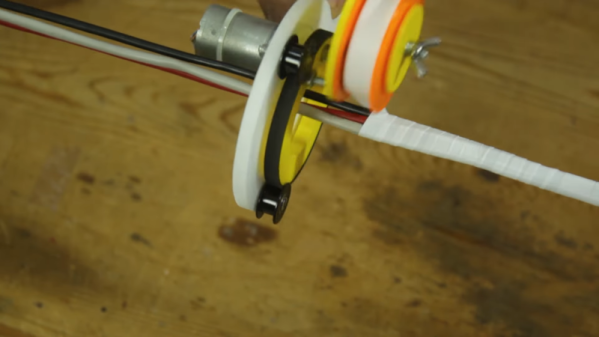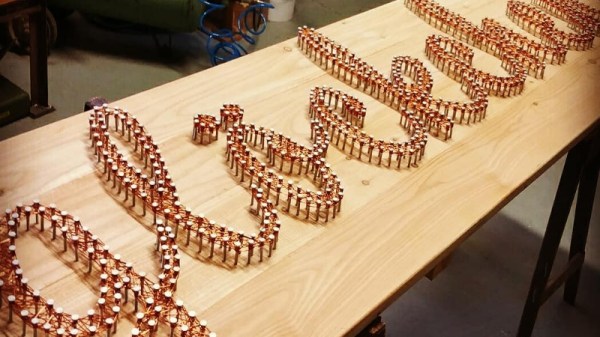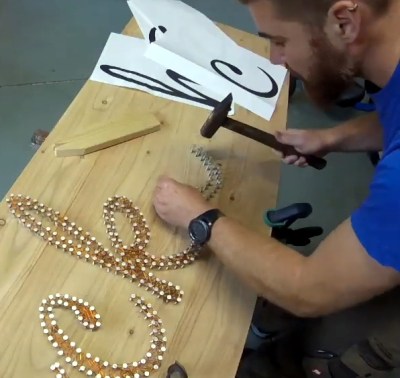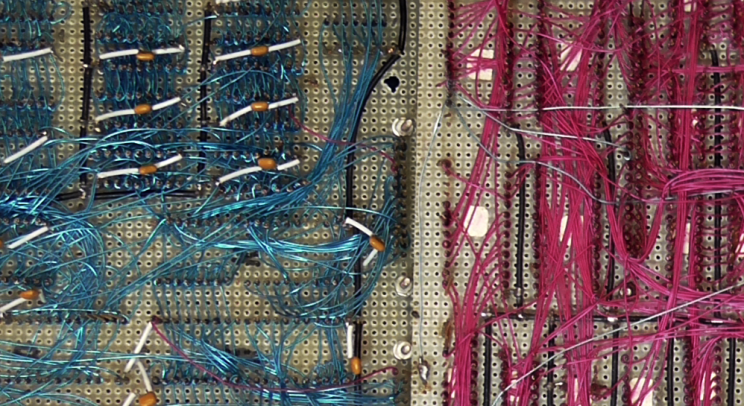[Mr Innovative] likes to keep his wire harnesses tidy, but it is a pain to neatly wrap cables. So, he automated the process using a combination of milled acrylic and 3D printing. We hope the design files will be up on his website soon, although the mechanism is similar to another wrapping machine he made a few years ago. However, it can still be a source of inspiration if you want to do a unique take on it.
To use the machine, you feed the wires through the center hole and mount tape on the spool. A motor spins the spool and you only need to slowly advance the tool to get a nice close wrap. Naturally, you can wrap tape around wires by hand, so this is a bit of a luxury item. However, we could see modifying it to move the cable through at a constant rate with another motor, which might do a better job than you can do by hand.
We couldn’t help but wonder if you could start with a ping pong paddle instead of cutting the frame out of acrylic.


















